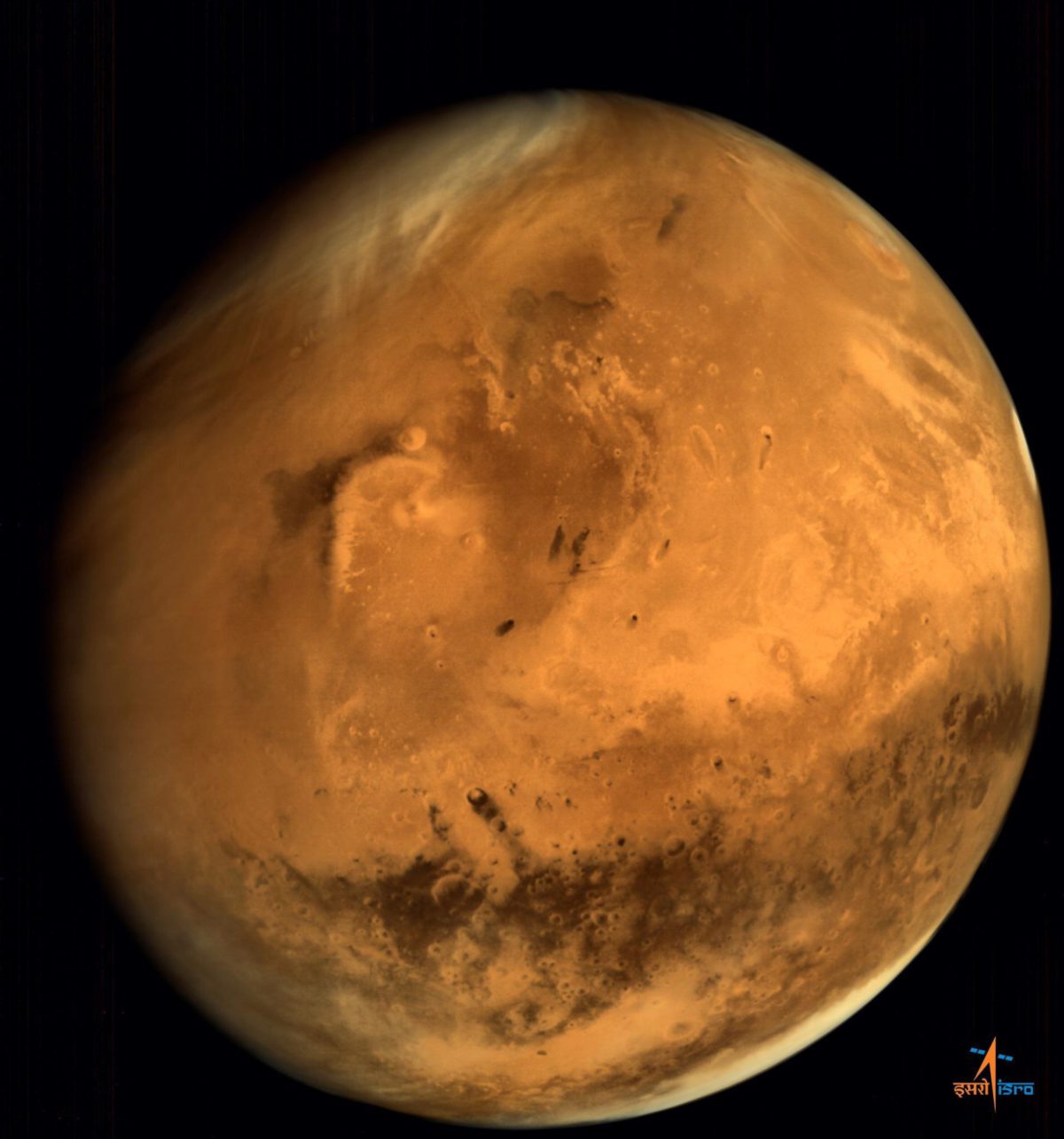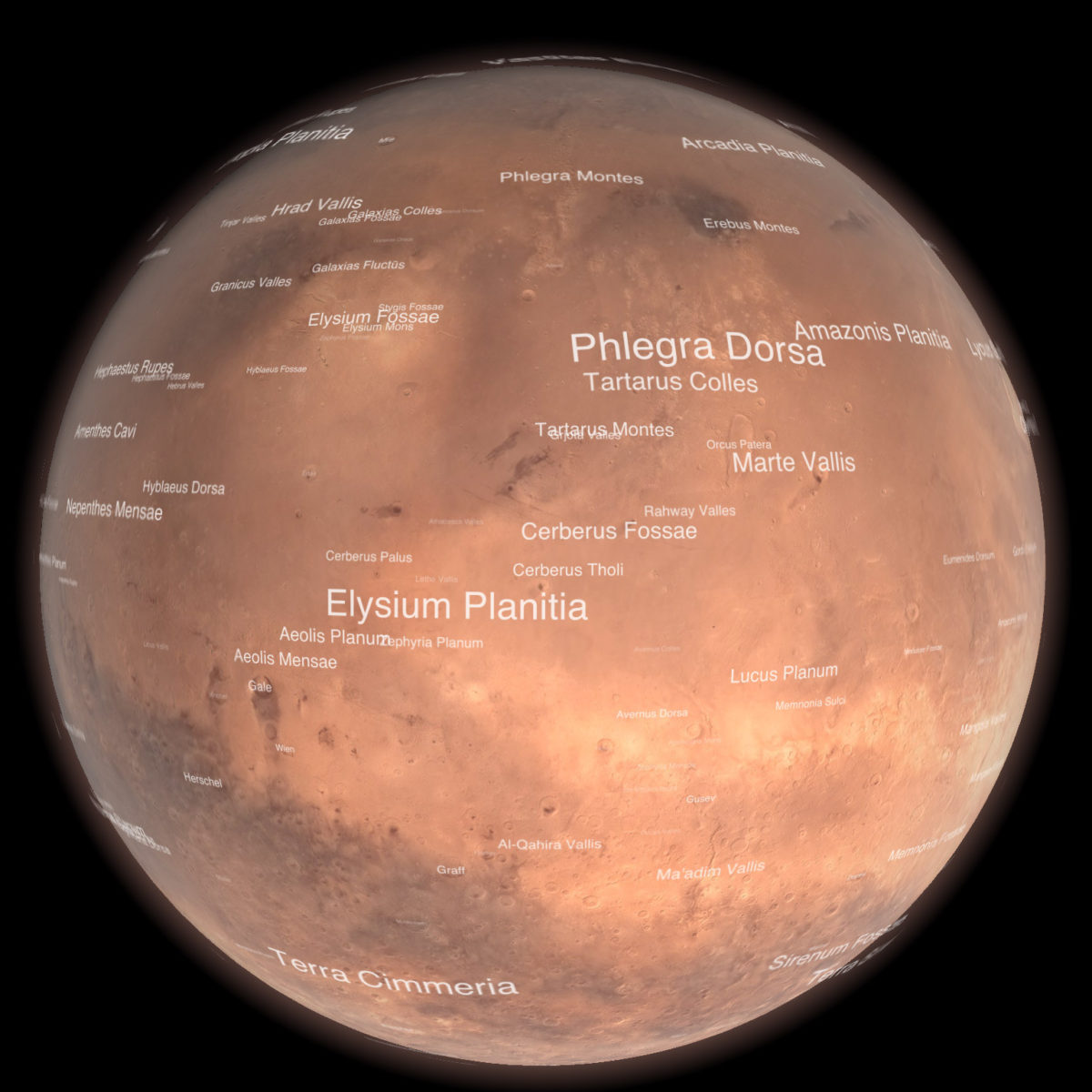Emily Lakdawalla • Oct 07, 2014
New global Mars image from Mars Orbiter Mission features Gale crater
ISRO has released a second global image of Mars from the Mars Colour Camera on Mars Orbiter Mission, and just below the center of it is Gale crater, home to Curiosity. Gale is easy to spot from its very dark floor forming two horns that cradle Gale's central mountain, and the dark streak that runs out of the crater toward Terra Cimmeria to the south. Gusev crater, and the silent Spirit rover, are also in the photo -- look at the context map below to help you pick it out.

Here's a screen cap from the Mars Globe app to help you find your way around the image. The global view doesn't look quite the same because Mars Globe is simulating the view from significantly closer -- about 7000 kilometers away -- so there are features that disappear around the edges of the disk on the Mars Globe simulation that are visible on the disk in the much more distant Mars Orbiter Mission photo. (In particular, in the photo above you can see the great shield of Olympus Mons right at the edge of the disk at upper right, but it's not visible in the map below because the viewpoint is too close.)

This newly released global view of Mars is distinctly less red than the first one that came out of the mission a week ago. When a spacecraft first turns on its instruments, it may take a while to get the calibration right. It's been interesting to watch space enthusiasts on the Internet fiddle with the color in the first image in order to produce something that looks more pleasing to them. Most people agree that the original was too red (or, more precisely, that the blue channel was far too dark), but different people have produced different results based upon their judgment of what Mars should look like. Here are eight slightly different views of that one image of Mars:

I assume we'll be seeing some nicely processed versions of the new photo from the amateur community -- I'll post one here when I see one I like!
The Time is Now.
As a Planetary Defender, you’re part of our mission to decrease the risk of Earth being hit by an asteroid or comet.
Donate Today

 Explore Worlds
Explore Worlds Find Life
Find Life Defend Earth
Defend Earth

